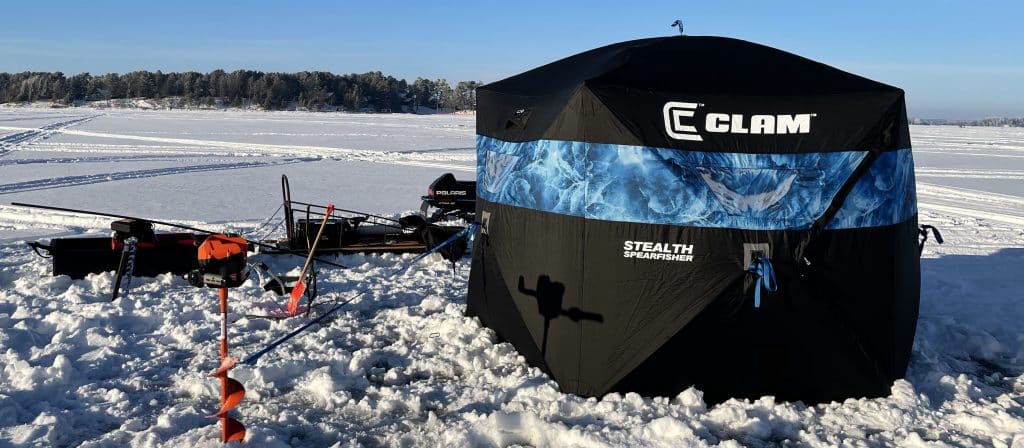Darkhouse Spearfishing – An Introduction
In this new series John Kaczorek and Mark Norquist head out on the ice of northern Minnesota to share stories about darkhouse spearfishing.
Subscribe today and make sure you don’t miss any of the stories!
Click here to access all of the stories already published in this series.
Subscribe today and make sure you don’t miss any of the stories!
Other darkhouse spearing posts you might like:
Darkhouse spearing with Janis Putelis and Mark Norquist
Intro to the Hardwater Hunters Series
Craftsmanship of the Darkhouse Spear
Pike Fever & The Lure of Spearfishing
Traditional Spearing of Lake Whitefish
Smoked Lake Whitefish with Herb Aioli Dressing
Lemon-Dill Cream Cheese Spread (accompaniment for smoked whitefish)
Insights on the History of Darkhouse Spearfishing Decoys (video)
How to smoke Lake Whitefish (video / Recipe)
The Clam Stealth Spearfisher Pop-up Ice Shelter
Ice fishing has a long and storied history, and it’s no different with this niche within the ice fishing world. Over time there has been some controversy over the method. Some classic fishers who only use hook and line feel that darkhouse spearers take too many of the large northern pike in certain waters. With darkhouse spearing there is no “catch and release”, so there is some validity to this argument. However, if the method of spearing is practiced with good ethics and legal regulations are followed there should be no concern with this method of taking fish.
Another topic of discussion is whether eating the large apex predators often targeted with the spearing method is healthy. The concerns lie in whether these larger fish who eat smaller fish are harboring an unhealthy level of mercury, or other toxic substances. Generally speaking, larger fish contain more mercury than smaller fish. It’s also important to note that all fish most likely contain certain amounts of mercury, including fish that you buy in a store. A study published in 2008 looked at the level of mercury that was in Northern Pike livers. They studied 124 fish from inland lakes from Isle Royale, Michigan and found that “total mercury in livers increased exponentially compared with concentrations in fillets“. For those who like to eat northern pike livers (me being one of them), this is unfortunate news, but good insights to guide your eating habits. Each state has guidelines for how much fish a person should consume in their region. Here’s an example of the Minnesota Department of Natural Resources (DNR) fish consumption guidelines.
At Modern Carnivore we wholeheartedly support this traditional method of fishing…which in actuality is more like hunting. #hardwaterhunters



Share this: